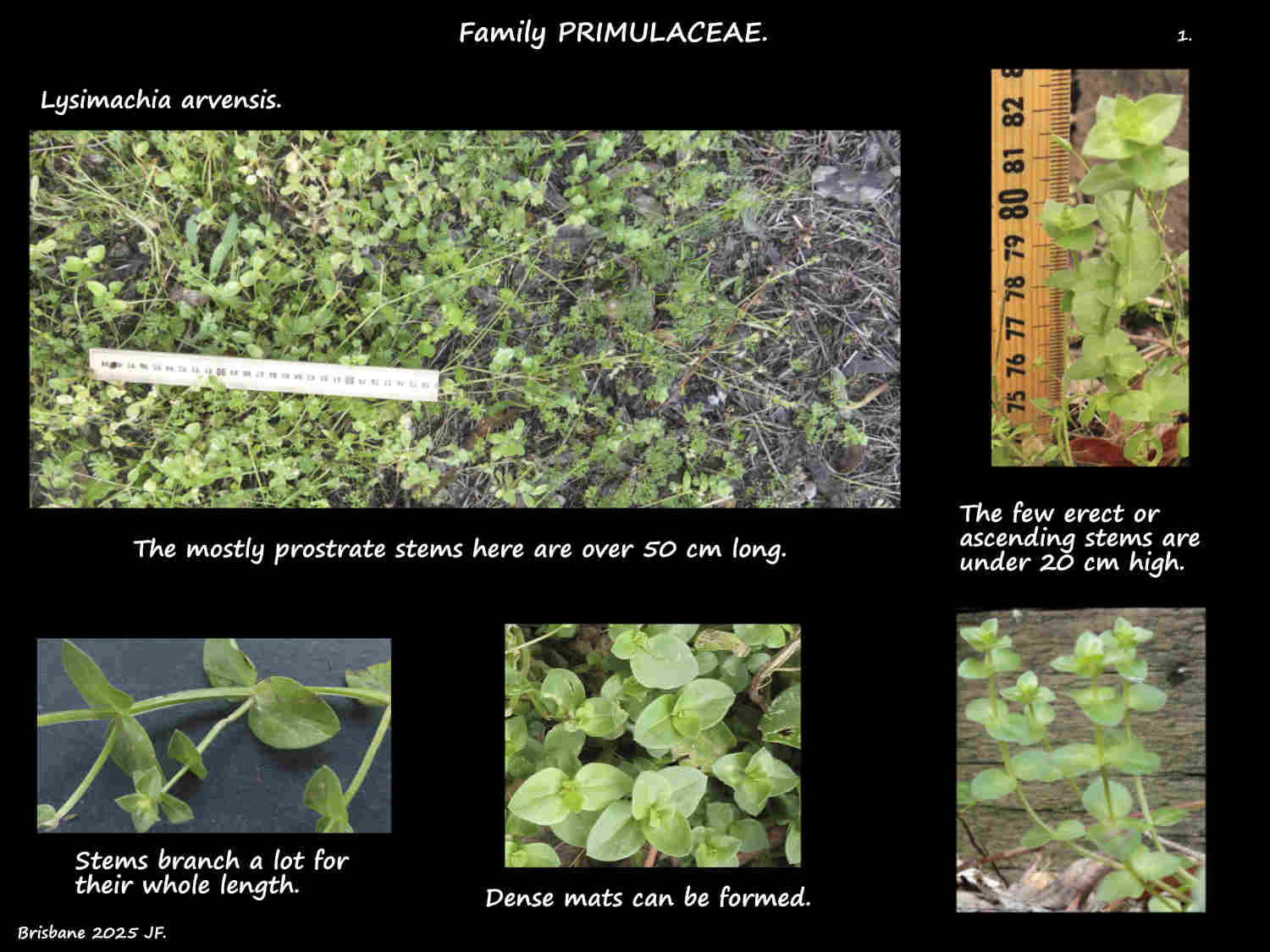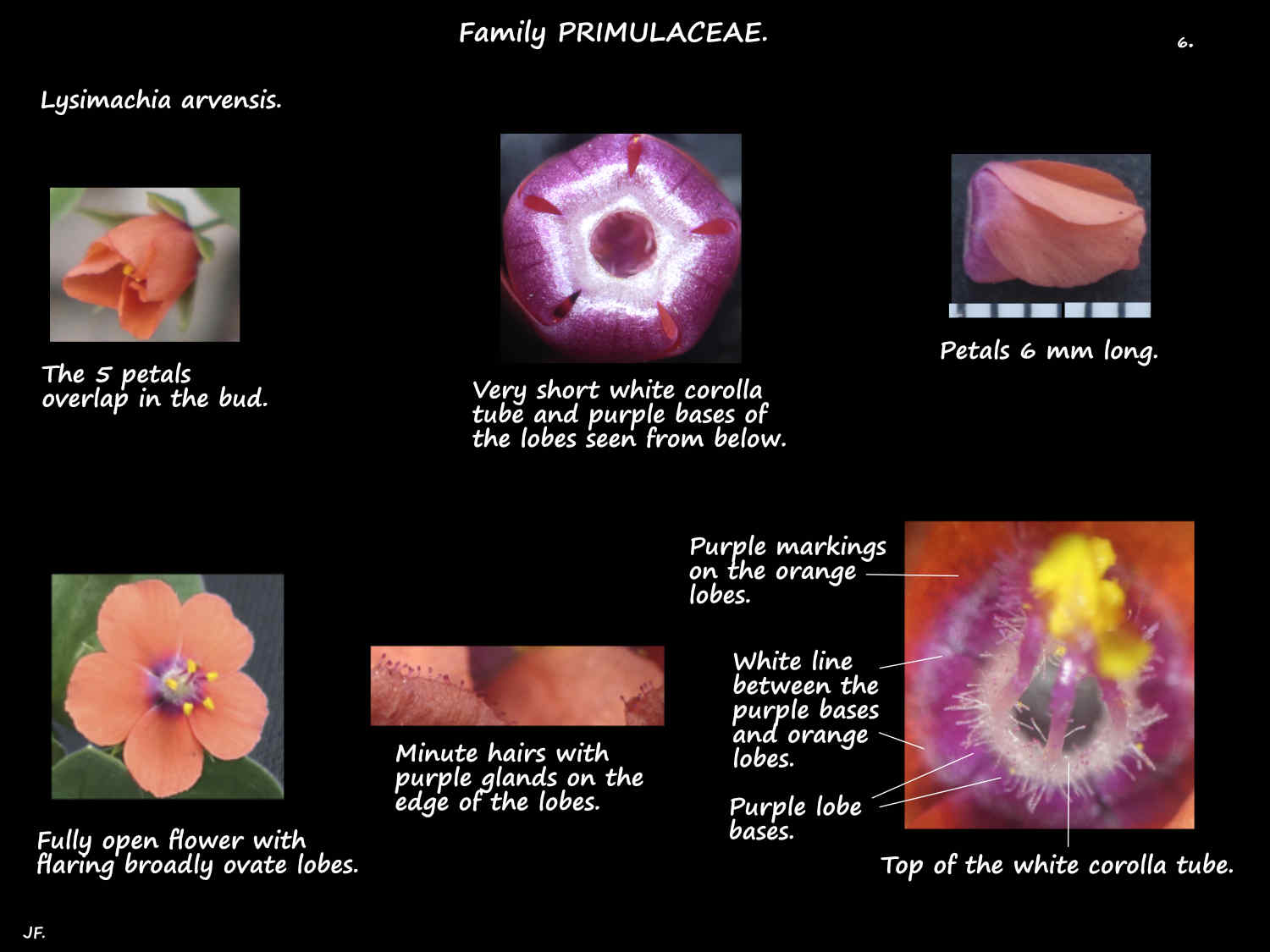Lysimachia arvensis.
The Scarlet Pimpernel is also known as Anagallis arvensis.
It is native to a wide area across Europe, North Africa and into Asia.
It is naturalised in Australia.
Previously occasionally seen as an ornamental it is now a weed found in moist areas.
Annual or perennial herbs with slender stems up to 50 cm or more in length.
The much-branched stems are mainly prostrate.
New stems, up to around 20 cm long may be erect or semi-erect.
Stems are square in cross section with short wings or keels down the angles.
Young ones may have purple glands.
Leaves are opposite and in 4 ranks (decussate) or rarely in whorls of three.
There is no petiole with the blade attached to the stem.
The ovate to elliptic blades are up to 2.5 cm long by 1 to 2 cm wide.
The tip is usually a short point and the base heart-shaped.
The paler green lower surface is dotted with dark brown glands.
The single-flowered axillary inflorescences appear along most of the stem.
Flowers are on a thin straight pedicel around 1 cm long.
As the fruit develops the pedicel elongates to around 3 cm and curves down.
The 5 sepals are united just at the base.
The narrow lance-shaped lobes are up to around 5 mm long.
They remain on the fruit elongating to around 7 mm.
The 5 petals are fused into a short corolla tube.
The flaring lobes are usually longer than the calyx lobes or equal to them.
The ovate lobes have tiny glandular hairs on the edges.
Fully open the corolla is up to around 1.5 cm across.
Typical flowers are orange (to red) with the corolla tube being white.
There is a white line between the orange lobes and their purple base.
There may be purplish markings on the lobes.
There are also forms having blue or purple lobes.
There are 5 stamens and no staminodes.
The free filaments insert at the base of the corolla tube.
When the flower is fully open the anthers extend past the corolla.
Filaments have long multicellular hairs that are white or purplish.
The superior green ovary consists of 5 fused carpels.
It has 1 locule with numerous ovules with free central placentation.
The pale ovules have a finely nodular surface.
The style, shorter than the stamens has a small globular stigma with papillae.
The fruit are capsules around 4 mm long with 5 ridges down them.
The pedicel elongates and curves down and the sepals remain.
Capsules split around the middle – circumsessile.
The dark 1 mm seeds have tiny nodules on the surface.
J.F.










